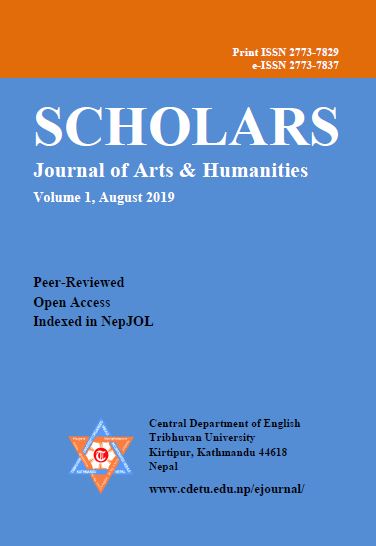Family Dynamics: An Intergenerational Study on Asian American Narratives
DOI:
https://doi.org/10.3126/sjah.v1i0.34448Keywords:
Cultural identity, cultural root, diaspora, immigrant, IntergenerationAbstract
The relationship in Asian immigrant families ranges from intergenerational and intercultural conflict to mutual understanding over the period of the time. Shaped by different cultural contexts of native and host land, the first and second-generation immigrants have varying world views, perceptions and attitudes rendering conflicts of interests in their priorities. These differences are further widened by their generational differences. However, they negotiate their cultural differences and show mutual understanding, respect for differential priorities and flexibility for co-optation of diverse cultural practices. They involve in dynamic intergenerational relationship full of inconsistencies and contradictions, which keeps of changing in different contexts over the period of time. This article explores the dynamic relationship of the first and second-generation immigrants in Asian-American narratives: The Namesake by Jhumpa Lahiri, The Bonesetter’s Daughter by Amy Tan, Native Speaker by Change rae Lee and Chorus of Mushrooms by Hiromi Goto. Both generation immigrant characters in these narratives constantly vacillate between the cultural spaces of their home and host countries in their negotiation of intergenerational relationship. This article analyzes the cultural vacillation of immigrants in the critical frame of Stuart Hall’s cultural identity which he conceptualizes in his notion of being and becoming.
Downloads
Downloads
Published
How to Cite
Issue
Section
License
© Central Department of English, Tribhuvan University and Authors




